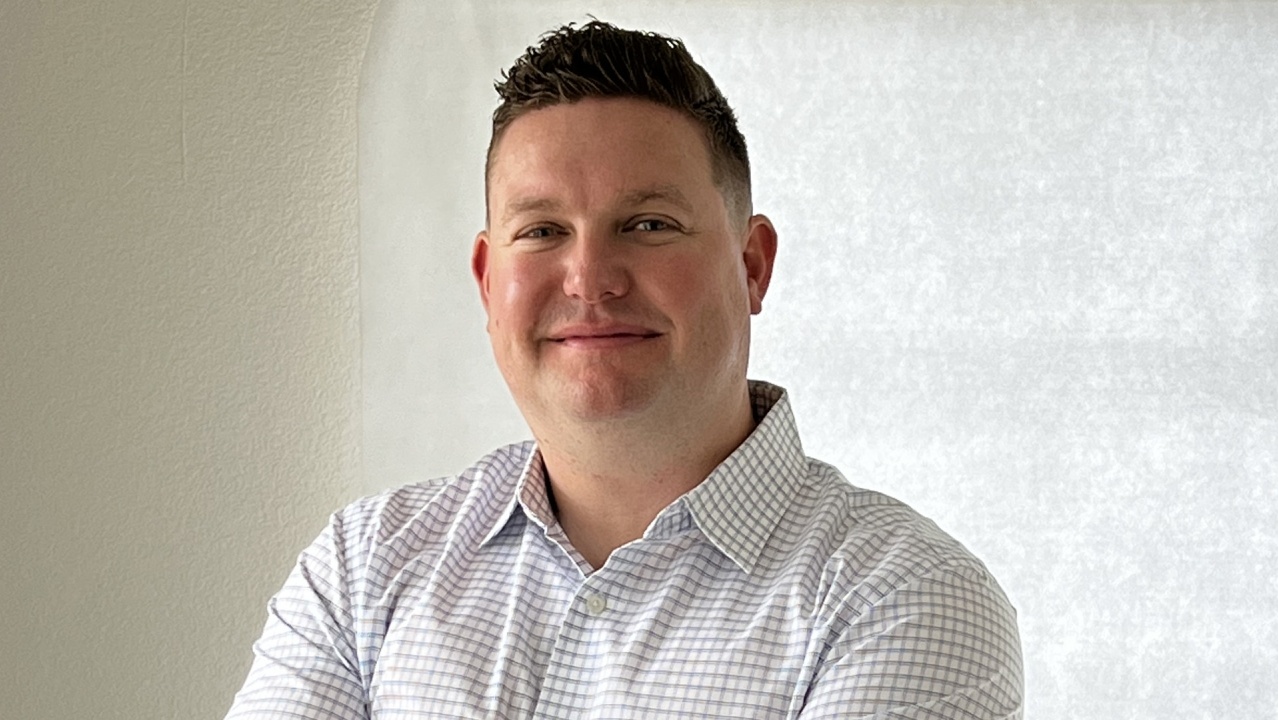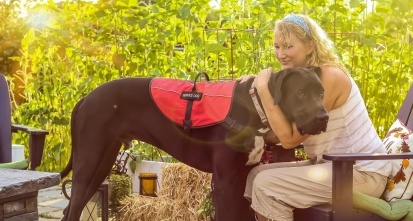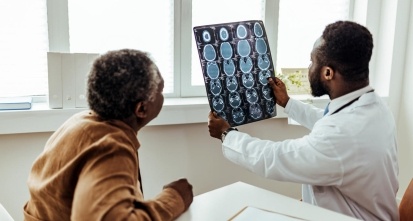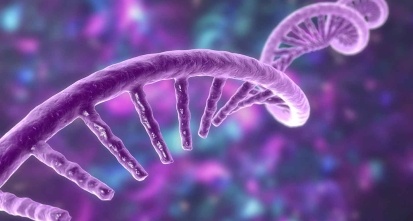Gain new perspectives for faster progress directly to your inbox.

A conversation with Ben R. Taft, PhD., Senior Director of Chemistry, Via Nova Therapeutics
With an ever-growing body of knowledge and rapidly advancing technologies, the pace of change in the drug discovery industry is fast. Yesterday’s challenges turn into today’s opportunities, which then become commonplace in the world of tomorrow. In this ongoing article series, we share recent conversations we’ve had with drug discovery professionals that capture this intersection of challenge and opportunity. We hope you find these discussions as interesting and insightful as we have.
This first article presents a conversation with Ben R. Taft, PhD., Senior Director of Medicinal Chemistry at Via Nova Therapeutics, on challenges and opportunities in SAR studies.
CAS: What has been the biggest change you’ve experienced in SAR studies since you entered the field?
Ben: Changes in the data world. The move toward digitalization in the industry has definitely been very impactful. In parallel, there’s also been an explosion of data science and tools for visualizing and interpreting data. With digitalization making data more accessible, we have seen the development of tools for connecting all that data—linking it together and associating it with other data—enabling teams to work much more efficiently. With these tools, we can identify trends in the data and make new observations that we weren't able to before.
And then, on top of all that, there’s growth and development in machine learning (ML) and artificial intelligence (AI). When you put all of these pieces together, you’ll find that there are a lot of really exciting things happening in the data world.
CAS: I’m glad you mentioned ML—we’re hearing a lot about it these days. How are AI and ML affecting drug discovery and SAR?
Ben: I think this field is really just getting started, but we’re already seeing impacts on structure predictions and optimization. I’m not an expert in this specific area but my understanding is that, at a very simple level, ML makes the biggest impact when you have large datasets. It’s useful for finding trends and insights in datasets that are too large and complex for humans to sort through, but which ML can analyze very quickly and efficiently. For example, if you have enough of the right kind of data, you can build models to help design new structures by predicting things like solubility, bioactivity on an enzyme, and so on.
A good example where the dataset is too large for human analysis is the use of DNA-encoded libraries for screening bioactivity. They're essentially generating billions of data points using DNA-encoded library screening and then their own custom ML algorithms to sort through that data and predict the best structures to synthesize and retest.
But, as my colleagues who work in this area are always reminding me, the output from any ML or AI project is only as good as the data that's going into the project. The quality of your model and its ability to make predictions that work in the real world is very much limited by the size of your dataset as well as the range and diversity of your data.
CAS: What do you think is the benefit of using AI and ML? Is it just to speed up your work, or do you think it’s enhancing what you do?
Ben: I think it’s helping us identify novel structures that we wouldn’t have otherwise predicted and make sure we’re not overlooking something as well as increasing efficiency. Think about it this way. In a typical project, you’ll synthesize 200 to 2,000 new analogs of a drug trying to fine-tune all the different physical, chemical, and biological properties before nominating a drug candidate out of that set of compounds. Each one of those compounds has ten to fifty pieces of data associated with it—that’s a lot of data.
While there are excellent tools for visualizing the data so we can look for trends, thresholds, and activity cliffs, there's still human error and the possibility of missing something. But with AI and ML, the models will suggest compounds to prioritize based on certain trends or observations and act as a backup to the scientist. They feed us additional data so we can make better decisions more efficiently.
However, ultimately, you still have to synthesize new compounds and get real data to make final decisions.
I think what people are hoping is that instead of having to make 200 to 2,000 new compounds to find a drug candidate, we would only need to make 20 to 30 compounds out of all the possible designs. Unfortunately, I don't think we're anywhere near that yet.
CAS: While AI and ML still have a long way to go, what role do you see them playing today for the drug discovery chemist?
Ben: I view them as an additional tool in the overall toolbox that drug discovery scientists have. At the end of the day, what we do is very complex and nuanced, and there’s so much uncertainty in translating a drug from in vitro studies to humans, that I don’t think AI will be taking jobs from chemists any time soon! We have to do all these safety and toxicology studies, working in different species of preclinical animals, before we ever think about putting a compound into a human because no matter how much data, software, and technology we have today, those studies are still the best predictor of what safety outcomes are going to be in a human.
The AI and ML tools we have today are supporting the work of drug discovery scientists and giving us additional insights.
CAS: Let’s pivot now from the virtual world to the wet lab. Where do you think the biggest bottlenecks are in small molecule drug discovery?
Ben: There are bottlenecks everywhere you look! One big one is the synthesis of new compounds. During lead optimization, you need to synthesize hundreds or even thousands of new analogs for each structure. With each analog taking as long as several weeks to synthesize, you’re talking about a big expenditure of time and money, especially when you factor in all the time scientists are spending coordinating all these efforts.
Then, once you get the analogs in, you need to run them through a set of dozens of assays, collect the data, and start the analysis part of the cycle that we just talked about.
CAS: Do you see any good solutions to this bottleneck?
Ben: One technology I’m looking forward to is microscale chemistry platforms. Microscale chemistry platforms enable the rapid synthesis and purification of tens to hundreds of new drug molecules in plate format in parallel, utilizing state-of-the-art robotics and software. These platforms are exciting because, in theory, they enable the cycle of design, synthesize, test, analyze, and back to design much more quickly than conventional methods, and they generate more data faster. The hope is that you'll be able to identify the best drug analogs faster and get to decisions faster.
What I like about these platforms is that they generate real data, not the calculated or predicted data that ML and AI platforms generate. They’re not helping you prioritize analogs to study but getting the experiment done so you can make solid decisions now.
Ben: This discussion of predicted data and empirical data raises an important point I’d like to make about technology. What's become pretty clear to me over my time in the industry, and just by being a scientist in general, is that we spend a lot of time talking about different technologies and different strategies. Individually, these different technologies are often really great tools, but I have never seen a situation where one technology or strategy applies to every single project.
To be a really great drug discovery scientist, you have to be well versed in all the different technologies and tools and strategies and evaluate their suitability for each project. There will always be caveats or differences between individual drug research projects that make one situation different from the other.
For example, AI is not going to help every project. There are so many different things you have to evaluate—the target, the drug product profile, the disease, the patient population, how the drug is administered, where the drug is administered—and all these different factors affect each project, making that project unique and different. No single tool like AI is always going to be the right solution for every project.
CAS: That’s a great point about choosing the right technology for your project! Let’s switch gears and talk about drug discovery in general, starting with small molecules. Why develop small molecule therapeutics? We’ve now got protein and antibody therapeutics, cell and gene therapies, antibody-drug conjugates, antisense oligonucleotides—where do small molecules fit in?
Ben: That’s a great question and it makes the point I was just talking about—you need the right technology for the job and there is no one-size-fits-all solution to any problem! There are certain things that antibodies are great at, right? They have a super long half-life in plasma, so you can dose once a month, and they have extraordinarily efficient target binding capacity. But on the limitation side, they're really expensive to manufacture, difficult to make stable, challenging to distribute, and have to be injected, which is not the ideal route of administration. Lastly, and maybe most importantly, scientifically, they don't cross cell membranes much at all unless they're uniquely designed or engineered. So you can't target any intracellular or intramembrane biological targets unless they extend out beyond the cell membrane or the tissue.
This is probably the biggest distinguishing factor between small molecules and biologics in general—with small molecules, you can optimize the properties to get into any tissue type you want, in any part of the cell compartment you want. In addition, in parallel, you can optimize the ADME or DMPK properties so that the drug can be administered in an oral tablet or capsule, which has proven to be the most preferred way that patients like to take drugs.
Small molecules are also typically cheaper to manufacture and have better storage, stability, and distribution properties.
But, again, there are going to be scenarios where your drug research program is perfectly suited for a biologic or any of these other new therapeutic modalities like cell therapies, radioligands, CRISPR, and so on.
There are all kinds of exciting new things coming into the market now and being developed, but no one of those technologies is going to apply to every single drug discovery project.
CAS: Speaking of drug projects, can you tell us a little bit about what your mission is at your current company, Via Nova Therapeutics?
Ben: Sure! We’re trying to make an impact on the important viral diseases that big pharma is ignoring. Via Nova was spun out from Novartis by Don Ganem and Kelly Wong. We wanted not only to continue working on the programs we'd already started, but also to dive into new research areas, focusing on viral diseases that big pharma is not adequately resourcing.
Big pharma typically doesn’t put much effort into viral diseases unless they are chronic, like hepatitis and HIV. But there’s a lot of unmet need beyond this. COVID was a big reminder of that. At Via Nova, we’re working on acute and subacute viral diseases, many of which don’t have any treatments, such as BK polyomavirus.
CAS: For our last question, we’re going to give you a magic wand to fix anything you want in the drug discovery process. What would you fix?
Ben: I think the biggest problem in our industry is really two-fold. First, the general public doesn't really understand how drugs are discovered and how much time, effort, and money it takes to develop new medications. Better transparency and education about the biopharma industry would benefit everyone.
Second, I think our paradigm for how drug discovery and development research is funded is somewhat limited because it is essentially all privately funded. The money comes from the investment world or the financial world, and the drivers are all capitalistic. The projects that get the most support are not necessarily the ones that are most important to patients, but the ones that are determined to have the most money-making potential. Those decisions are all trickled down to the scientific level where a scientist might have a brilliant idea for a new drug that would completely cure a disease where there's no medication currently available. But if there are limited numbers of those patients worldwide, then it’s not a viable business strategy and that project isn’t likely to get support.
I think this whole issue of how medical research and drug discovery research is prioritized and funded will, in the long term, have some negative consequences on which diseases are prioritized and how much medicines cost. More general awareness and education about how our industry is funded and how challenging it is to get funding could lead to a wider pool of people thinking about how to solve this problem and generating new ideas and new models for how to fund research, either by the government or social sources.
At the end of the day, I got into drug discovery to make medicines that can treat or even cure diseases. We should make sure that we make medicines that patients need, not just the ones that will generate the most profit.



